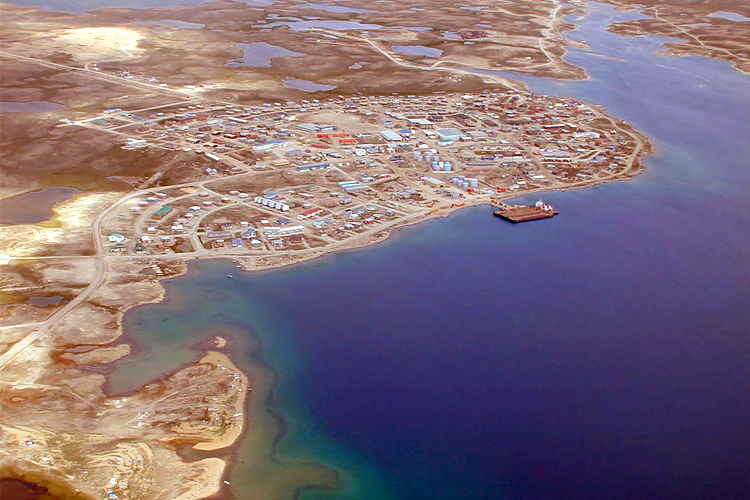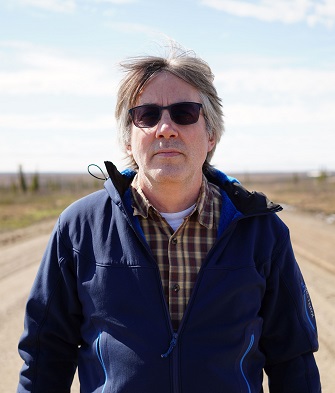The area surrounding Cambridge Bay — a small town in western Nunavut — has been inhabited for 5,000 years. It’s rich with artifacts that tell the story of the peoples who’ve lived there: first the Tuniit, and later the modern-day Inuit group known as the Inuinnait.
Max Friesen first went to conduct archaeological research in the Arctic in 1986, when he was a graduate student. Now a professor in the Department of Anthropology in the Faculty of Arts & Science, his work explores how changes in social organization, worldview, economy, technology, environment, and landscape have shaped the lives of people living in the Arctic.
In both Cambridge Bay and the Northwest Territories’ Mackenzie Delta, Friesen’s work has greatly enriched our knowledge of Arctic history. But he stresses that it’s a history that could not be properly documented without the participation of Elders in the region.
In the 21st century, he says, “archaeology has been moving toward a collaborative model where the intent is to be less extractive: to work on projects at the request of local groups, which will be to their benefit.”

For 25 years, Friesen has been working with community members from Cambridge Bay to model this idea through a unique partnership that shows how the marriage of two very different ways of knowing can lead to a powerful expansion of knowledge — and to friendships that have spanned a generation.
The Pitquhirnikkut Ilihautiniq/Kitikmeot Heritage Society (PI/KHS) operates Canada’s northernmost museum, the May Hakongak Community Library and Cultural Centre. Run by Elders, its activities include cultural programming, sewing and traditional tool making workshops, and oral history and language programs for youth and other community members.
In 1999 Kim Crockatt, PI/KHS’s original volunteer president, placed a call to Friesen. “She got in touch with me out of the blue and asked whether I might be interested in working with them,” he says. Along with several Elders, the pair flew by helicopter to Iqaluktuuq, an important caribou hunting site. Based on their shared vision and immediate fellowship, they decided to work together.
Apart from a break during which Friesen travelled back to the Mackenzie Delta to work on a climate change project, the partnership has endured since then.
“It’s been absolutely tremendous,” says Crockatt, currently the chief finance and operations officer at PI/KHS. “Max shares the same values as we do, so it makes the partnership very easy and beneficial for everybody.”
Affirms Executive Director Emily Angulalik: “We’re honoured to be working with an archaeologist who respects and honours the Elders’ point of view, and their traditional knowledge. Having that rapport with them really makes the work we do come alive.”
Each side of the arrangement provides expertise that is greatly valued by the other. The PI/KHS furnish Friesen with knowledge about heritage sites, environmental factors, transportation and wildlife safety, while he and his U of T colleagues head up archaeological operations and coordinate transportation and equipment. The result is a body of work that’s greater than the sum of its parts.

“If I were working on my own, I’d be able to find a lot of sites. But I wouldn’t be able to interpret them accurately without having this local knowledge,” says Friesen. “For example, I found a harpoon head and showed it to Analok, an Elder. I wasn’t clear on what it might be used for, and he told me it was for fishing. If I can talk to someone who lived there, and whose parents used similar harpoons, the case is closed.”
It’s important to stress that the oral history Inuit Elders tell are not myths: they are factual accounts that are critical to understanding the region’s evolution. One famous example involves the lost ships of the Franklin expedition, which remained “undiscovered” for almost 170 years because Inuit information about the wrecks’ location was ignored.
In another account, an Elder told of his Inuit ancestor hearing Tuniit music carrying across the air from the mainland. “It was assumed that there was a long period of history that separated the Inuit and the Tuniit, and they never met,” says Crockatt. “In spite of that, the Elders were able to describe them as very tall, and shy.” Friesen’s radiocarbon dating of artifacts from this period confirmed the Elder’s story.
The Elders are also critical to language preservation. They speak Inuinnaqtun, a language currently spoken by only 200 people. Though a number of them are unilingual, Angulalik says the small community means “our language is in danger of dropping so drastically that it becomes extinct. But we say the language is sleeping. And in order to revive it, it’s important to use it every day.”
Recently, Friesen and three former and present PI/KHS directors collaborated to write the first academic paper ever published in Inuinnaqtun in an academic journal. “Pitquhivut Ilihaqtavut (Learning About Our Culture)” was translated by Gwen Angulalik and published in Études Inuit Studies in 2023. Included in the paper are details about discoveries the group has made, including Tuniit carvings that are thousands of years old, and an Inuinnait stone house from the 1700s.
The partnership continues to this day: rewarding not only U of T and the PI/KHS, but the enterprise of arctic archaeology itself.
“The things I’ve done that I find the most exciting have come from this work,” Friesen says. “I’ve been able to solve problems that are significant to archaeologists, while contributing to local goals as well. This collaboration just sort of fell out of the sky, but it’s pushed me to study earlier periods and to publish on a range of issues that I wouldn’t otherwise have thought about. It’s been of huge benefit.”

